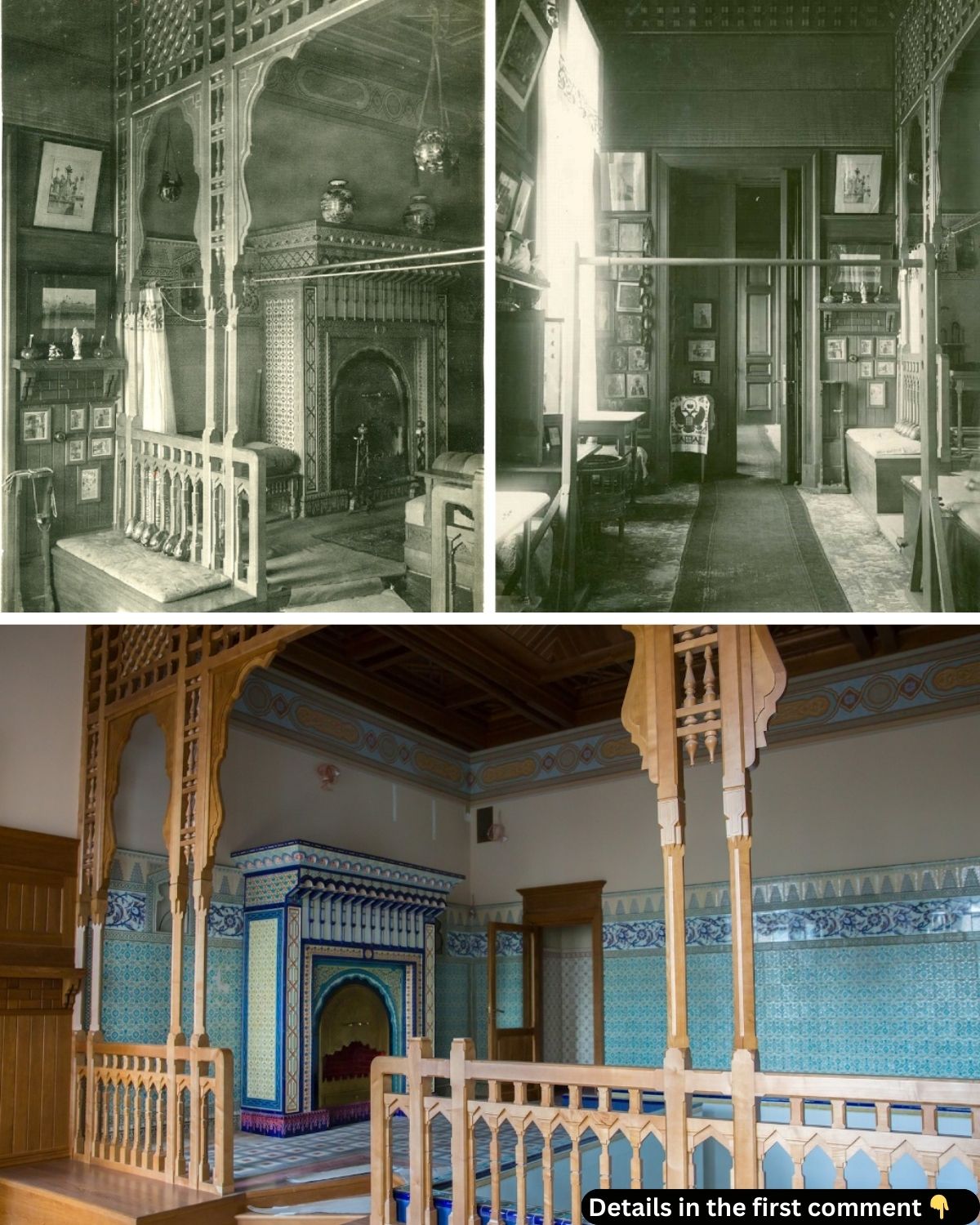Nestled in the Alexander Palace, Nicholas II’s Moorish Bathroom stands as a striking fusion of Eastern and Western design, once symbolizing imperial luxury. After years of neglect and destruction during the Great Patriotic War, the bathroom is now undergoing an impressive restoration. This remarkable project aims to recreate the unique splendor of the Tsar’s private space, offering a rare glimpse into the lavish lifestyle of Russia’s last monarch and preserving a piece of royal history for future generations.
The Creation and Design of the Moorish Bathroom
Nicholas II
In the late 19th century, Count Nikolai Ivanovich de Rochefort, a Russian architect famed for his imperial designs, was tasked with redesigning Nicholas II’s private bathrooms. His creation, known today as the Moorish Bathroom, was a masterpiece that married European opulence with exotic oriental styles. Drawing inspiration from his earlier work at the Bialowieza Palace in Poland, Rochefort crafted a bathroom unlike any other in the Russian Empire.
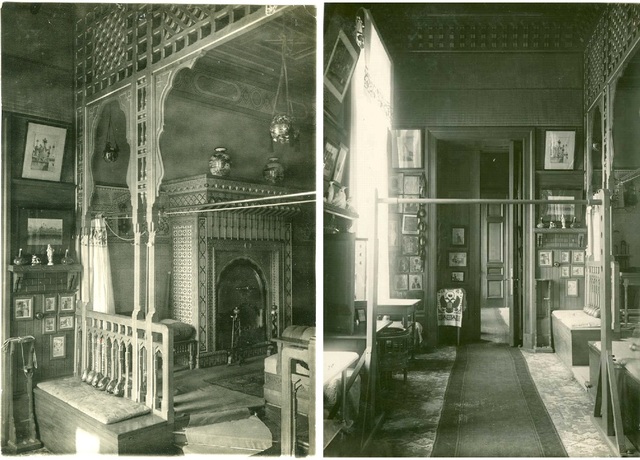
The bathroom’s design featured vibrant oriental-style tiles that covered the fireplace and the walls surrounding the bath, while Metlakh tiles were used for the floor. The coffered ceiling added an element of grandeur, and an openwork maple partition separated the space from the adjacent rooms. A Japanese reed mat on the walls, along with a luxurious carpet on the floor, completed the elaborate look. The furniture, crafted by the Meltzer Trading House, included a leather-upholstered sofa, oriental stools, a trellis table, and even a horizontal bar for gymnastic exercises.
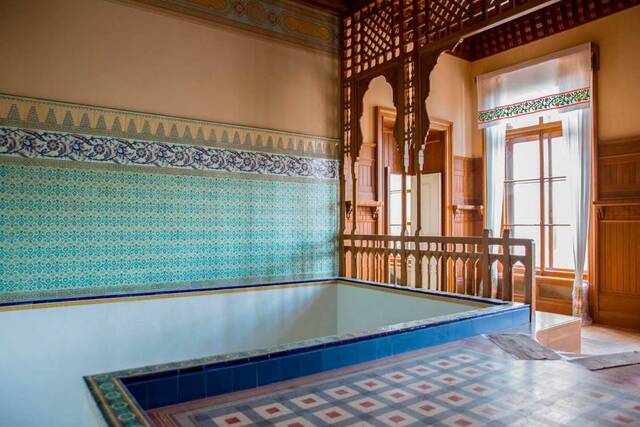
At the center of this extraordinary space was the bathing pool – a grand feature that could hold 7,000 buckets of water. The pool, lined with white tiles, became known as the “Basseinaya,” reflecting its purpose as a bathing area. The design was sophisticated, incorporating Charcot shower jets for massaging the body, which added an extra layer of luxury and innovation to the bathroom.
Video
Check out the documentary on Tsar Nicholas II, the Romanovs, and the Russian Revolution – it’s a captivating look at a turning point in history!
The Functionality and Engineering of the Bathroom
What made the Moorish Bathroom even more remarkable was the engineering prowess behind its creation. The bath was designed with an intricate system of water and waste pipes, a boiler for heating the water, and water tanks located in a special room beneath the Basseinaya. This complex network allowed the bath to function smoothly, while providing the necessary infrastructure to support its grandeur. It was an early example of how luxury and utility were interwoven in imperial Russian design.
In addition to the pool, the bathroom also featured an adjoining toilet room, which was located outside the door at the edge of the corridor wall. Despite its practical function, the design of this space was also carefully thought out, contributing to the overall aesthetic and function of the room. The Moorish Bathroom was a space designed not only for bathing but for experiencing an elevated sense of leisure and refinement, blending form and function seamlessly.
Impact of the Great Patriotic War on the Bathroom’s Interior
Like much of Tsarskoye Selo, the Moorish Bathroom suffered significant damage during the Great Patriotic War (1941-1945). The German occupation and subsequent battles destroyed many parts of the palace, and the Moorish Bathroom was left in ruins. The exquisite tiles, intricate furniture, and delicate woodwork were lost, leaving only the bare bones of the room.
After the war, the room was repurposed and used as an exhibition space, with parquet floors and simple painted walls replacing the original luxurious design. It wasn’t until the 1990s that the restoration of the Moorish Bathroom began to take shape, as the Tsarskoye Selo State Museum Reserve started the long process of bringing the room back to life.
Restoration Efforts and Discoveries
The restoration of the Moorish Bathroom has been a painstaking process that has spanned decades. One of the key breakthroughs occurred in 2017, when restorers dismantled parts of the bathroom and discovered the Tsar’s bathing pool underneath the floor, along with a significant number of fragments of ceramic tiles. These fragments provided valuable insight into the original color schemes and design patterns used in the bathroom’s decoration.
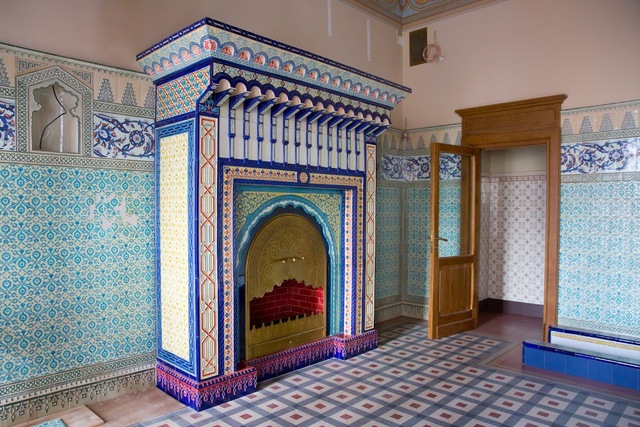

These fragments were integral in the restoration process, as they allowed the restorers to accurately recreate the wall cladding and other decorative features. In addition to the tile fragments, several small pieces of the original frieze were also found, helping to clarify the color scheme and decorative details. The information gleaned from these discoveries was used to guide the restoration and ensure that every element of the bathroom was restored with the utmost historical accuracy.
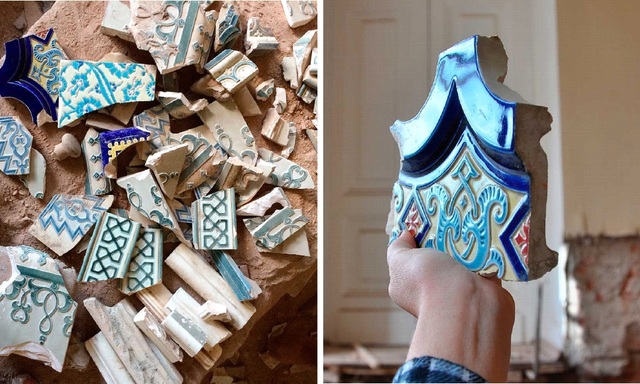
Between 2018 and 2019, the architectural elements of the Moorish Bathroom, including the wooden wall panels, ceiling cladding, and fireplace, were carefully reconstructed. In addition, the toilet room’s decoration was also recreated, and curtains and carpets were made based on historical documents and photographs. The restoration team’s meticulous attention to detail ensured that the room retained its original charm, while incorporating the elements necessary for its preservation.
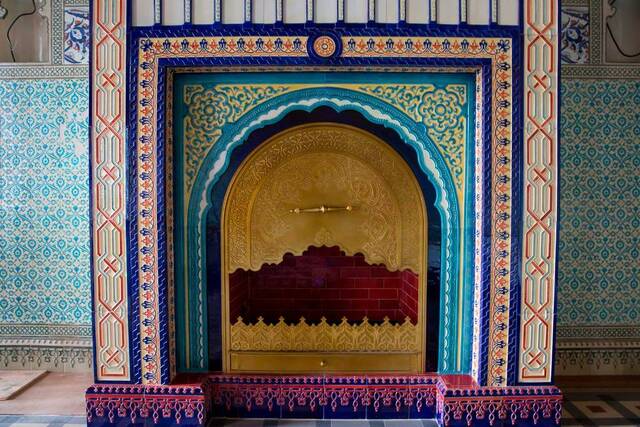
Cultural and International Contributions to the Restoration
The restoration of the Moorish Bathroom has not been solely the work of Russian experts. The Japanese Consulate General in St. Petersburg played a significant role in sourcing the authentic materials required for the project. A particular highlight of the restoration is the acquisition of a Japanese mat that will be used to replicate the original reed mat that adorned the bathroom’s walls. This international collaboration underscores the importance of cultural exchange in preserving historical sites and the shared appreciation for preserving such remarkable architectural treasures.
The use of historical documentation, including photographs and museum inventories from the 1930s, has also been instrumental in ensuring the accuracy of the restoration. The combination of modern restoration techniques with historical records has allowed for a faithful recreation of the Moorish Bathroom, ensuring that future generations will be able to experience this remarkable piece of Russian imperial history.
Current Status and Future Plans for the Alexander Palace
The restoration of the Moorish Bathroom is part of a larger effort to preserve and showcase the private, domestic life of the Russian imperial family. The restoration is nearing completion, with the room expected to be open to the public by December 2020. Once completed, it will be one of the eight interiors that will be unveiled in the eastern wing of the Alexander Palace, including the Reception Room, the Working Study, the Imperial Bedroom, and more.
The long-term vision for the Alexander Palace is to transform it into a memorial museum dedicated to the Romanov family. The museum will offer an intimate look at the lives of the Tsars and their families, providing visitors with a unique insight into their daily routines and personal spaces. The opening of the Moorish Bathroom will be a key moment in this transformation, as it represents one of the most unique and visually striking rooms in the palace.
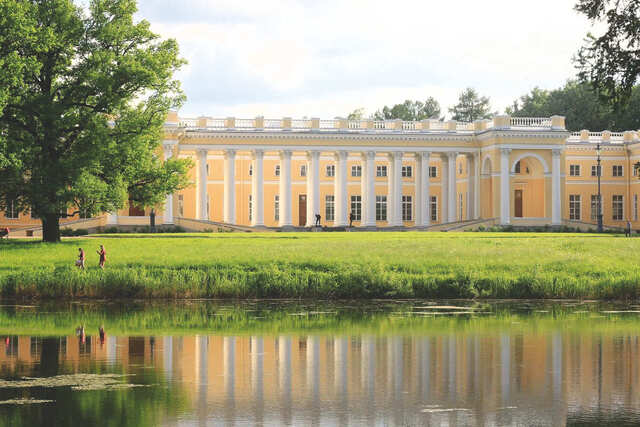
Video
Watch the video on the life of Nicholas II, the last Tsar of Russia – it’s a gripping and tragic story of his reign and downfall!
Conclusion
The restoration of Nicholas II’s Moorish Bathroom is not just a restoration of a physical space; it is a journey into the opulent world of the Russian imperial family. Through careful research, international collaboration, and a deep respect for historical accuracy, the bathroom has been brought back to life, offering a glimpse into the luxury and innovation of the Russian Empire. As part of the larger effort to preserve the Alexander Palace and its interiors, the Moorish Bathroom stands as a testament to the grandeur and complexity of imperial Russian design, and it will undoubtedly remain one of the most fascinating attractions for visitors to the palace in the years to come.
